Cooker is an irreplaceable thing in the household, because with its help we can please ourselves and our relatives with culinary masterpieces of our own production. However, each masterpiece has a flip side: the more juicy the grilled chicken or the baked meat in the oven, the harder it is to clean the walls of the oven from splashes and stains of fat.
It takes a lot of time and effort for the hostess to clean the oven of these contaminants. Manufacturers of modern kitchen stoves, equipped with ovens, offer a large number of original technical solutions that can facilitate this task.
Options for design ideas for cleaning
Oven The most popular design solutions for this issue are the following technical findings:
- Oven equipment with removable doors .
- The oven is equipped with a special design( pull-out trolley ), which allows the entire working chamber to be pulled out.
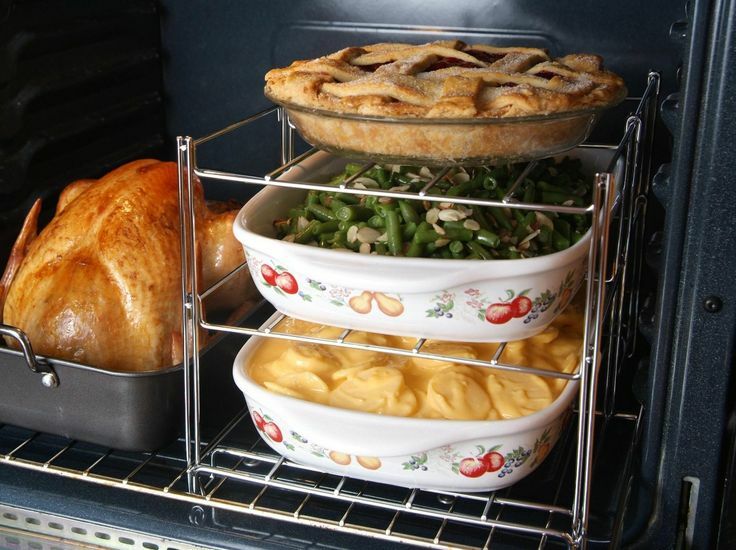 As a result, the hostess was able to control every step of cooking the dishes sent to the oven without the risk of getting burns. At the same time, the process of cleaning the oven has become much easier: the pull-out structure is completely removed and washed separately from the plate.
As a result, the hostess was able to control every step of cooking the dishes sent to the oven without the risk of getting burns. At the same time, the process of cleaning the oven has become much easier: the pull-out structure is completely removed and washed separately from the plate. - Use of special catalytic enamels ( containing special chemical reagents) for coating the interior surfaces of the ovens. Oven having such a coating, relieve the housewives of the need to clean them after each cooking.
- Equipping kitchen stoves with a pyrolytic self-cleaning function. Plates with this capability are considered the best, but also the most expensive.
Catalytic Cleaning of Ovens: What is it?
Catalytic cleaning of the inner surface of the oven is a fairly ingenious and technically not too complicated solution to the problem. The essence of it is as follows:
- The work surfaces of the oven( top, back and side walls, as well as the convector blades) are covered with a special enamel containing the oxidation catalyst. The catalysts are oxides of various chemical elements( such as: cerium dioxide, copper, cobalt or manganese).Catalytic enamel has a rough fine-pored surface of a dark color.
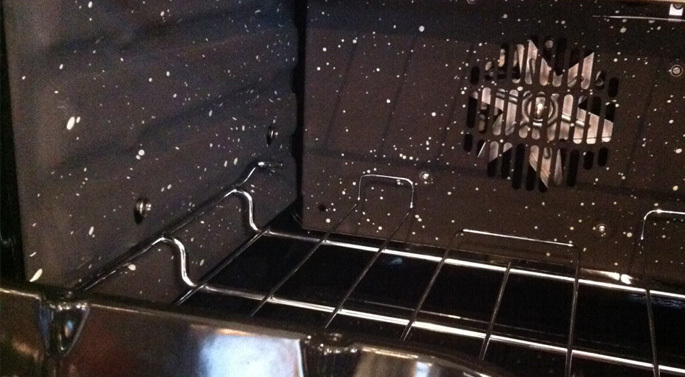
- Thanks to the catalytic coating, the walls of the oven will absorb fat droplets like sheets of blotting paper. The secret of this effect is simple: the particles of the catalyst, which is part of the enamel, start to activate and accelerate the process of fat oxidation when the oven is heated. As a result, the fat that gets to the walls of the oven does not remain on them in its original form, but instantly becomes charred, turning into carbon( ash) and releasing water at the same time.
- Activation of catalytic particles begins at a temperature of 150 degrees, and the best temperature of this process can be considered an indicator of 220 degrees.
- Do not want to spend a lot of time washing the oven.
- Love to cook and often use the oven. They want to buy an inexpensive but high-quality slab.
- Do not want to overpay for electricity.
What are the advantages of catalytic cleaning of the oven?
- Catalytic purification, a chemical process that does not require the use of complex technologies, is an inexpensive and versatile system. That is why plates equipped with the catalytic cleaning function are much cheaper than similar technology, which has a fundamentally different cleaning system for the oven.
- Catalytic cleaning saves the time and energy of housewives, as it eliminates the need to clean the oven after every use.
- Ash and water released as a result of the oxidation reaction can be easily removed from the surface of the catalytic plates with a moistened soft cloth. Self-cleaning of the oven takes place simultaneously with the cooking process, and it does not matter how the dish is cooked: stewed, baked or roasted. The oven will still remain clean.
- Catalytic enamel covering the walls of the oven has a long service life of at least five years. After the expiry of this period, the oven panels are replaced( many models of plates provide the possibility of such a replacement).Some plates are equipped with ovens, the walls of which have a two-way catalytic coating. As it is not difficult to guess, the panel with the erased enamel is simply turned over to the other side and set to the same place, and you can do it yourself, provided you read the instructions carefully. More often, after rendering such a service, users turn to the service center. The catalytic cleaning function can be equipped with both gas and electric cookers. Catalytic cleaning of ovens mounted in an electric stove saves electricity, because it occurs simultaneously with cooking, automatically.
- The catalytic cleaning system allows you to position the oven on almost every fifth of the kitchen, regardless of the arrangement of the furniture and the placement of the hob.
Are there any drawbacks to catalytic cleaning of ovens?
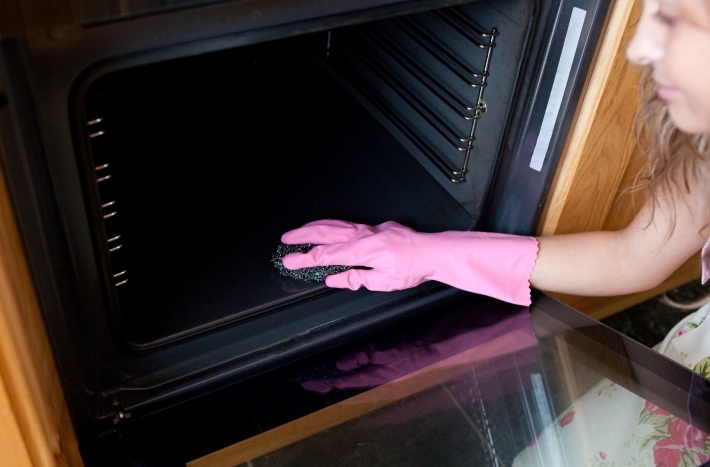
Yes, catalytic cleaning has a number of negative aspects:
- Catalytic plates can not always cope with very strong contaminants. Often, from large grease stains can be eliminated only as a result of repeated use of the oven.
- The catalytic coating does not have all the working surfaces of the oven: there are none on the door or the bottom of the oven. The explanation is simple: they have not yet learned how to apply the self-cleaning compound to the glass, but do not apply it on the bottom because the catalytic enamel is afraid of the impact of the molten sugar mass and milk, often flowing from the baking trays, on which pies, casseroles and puddings are baked.
- Oven working surfaces that do not have self-cleaning plates must be washed by hand. Hand will have to wash the grill, grate and baking.
How does pyrolytic oven cleaning occur?
Pyrolytic cleaning of the oven is a process of burning out all kinds of contaminants that settle on its walls. The very word "pyrolysis" is compound, formed as a result of the fusion of two ancient Greek words: "feast"( fever) and "lysis"( decay).
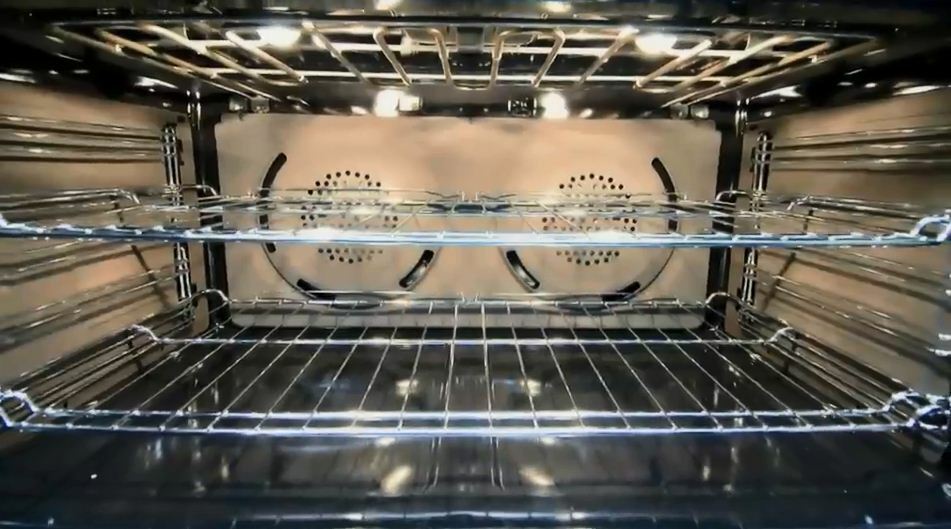
- The essence of pyrolytic cleaning of the oven is that it is heated to an extremely high( about 500 degrees) temperature, as a result of which all the contaminants in it burn out, turning into ashes. Wiping all surfaces of the oven with a damp cloth and getting rid of it, get a perfectly clean oven.
- The pyrolytic cleaning function is not automatic: it must be turned on manually. If the pyrolysis is switched on, the oven door is automatically locked. Open it can be only after the temperature inside the oven drops to 200 degrees. This is done for the safety of people who are near the included stove.
- The process of pyrolysis is always accompanied by an extremely unpleasant smell, so devices with pyrolytic cleaning function have powerful filters and built-in catalysts that neutralize smells by purifying steam. Catalytic filters are not subject to washing or replacement, since they have a resource designed for the full life of the device. Their automatic cleaning, carried out as a result of calcination, occurs every hundred hours of operation of the oven.
- The problem of strong fumes is solved by connecting the plate to the ventilation system. For this purpose, a special branch is provided in the structure of the plate, to which a pipe from the kitchen hood is connected.
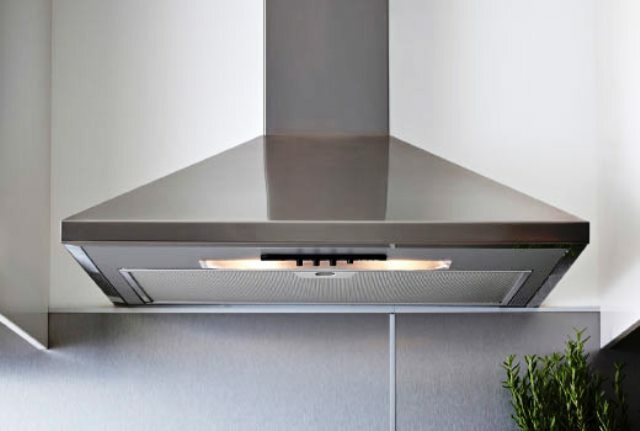
- The full pyrolysis cycle takes 2.5 hours. If desired, it can be shortened to an hour and a half( the economic cycle).The lion's share of time is the heating of the oven and the process of its cooling. Some models of plates are equipped with a special device that determines the level of pollution and automatically coordinates the duration of cleaning. In most cases, the user chooses the cycle he needs.
Requirements for pyrolytic cleaners
Due to the fact that the pyrolysis oven is heated to extremely high temperatures, manufacturers must provide them with the highest level of safety. That is why this category of devices must meet the following requirements:
- They are made of high-quality steel, capable of withstanding multiple thermal loads, without experiencing any deformation.
- Since ovens with pyrolysis are often classified as built-in household appliances, they should not become very hot, exposing kitchen furniture to the risk of spoilage or fire. Therefore, they have a coating of heat-resistant enamel and are equipped with a tangential mechanism for air-cooling the door. The door itself is equipped with several layers of high-strength glass.
What are the advantages of pyrolytic cleaning of ovens?

- Pyrolytic cleaning provides the best results.
- Devices with pyrolysis function relieve their owners of the need to periodically replace catalytic filters, as they are self-cleaning and have an increased service life.
- Frequent use of the oven results in a complete failure of household cleaners.
- Pyrolytic cleaning( as opposed to catalytic cleaning) effectively removes impurities from the entire working surface of the oven.
- Pyrolysis eliminates impurities from any food( including sugar syrups and dairy products).
What are the disadvantages of pyrolysis?
- Despite the high efficiency of pyrolytic cleaning, the landlady still has to periodically wipe the oven's working chamber, removing the remnants of soot from its walls moistened with a rag after each pyrolysis procedure.
- Hand-held cleaners are also removable elements of the ovens( such as: grilles, their guides, tray holders and baking sheets themselves).Fearing possible deformation, manufacturers demand to get them from ovens before the cleaning process.
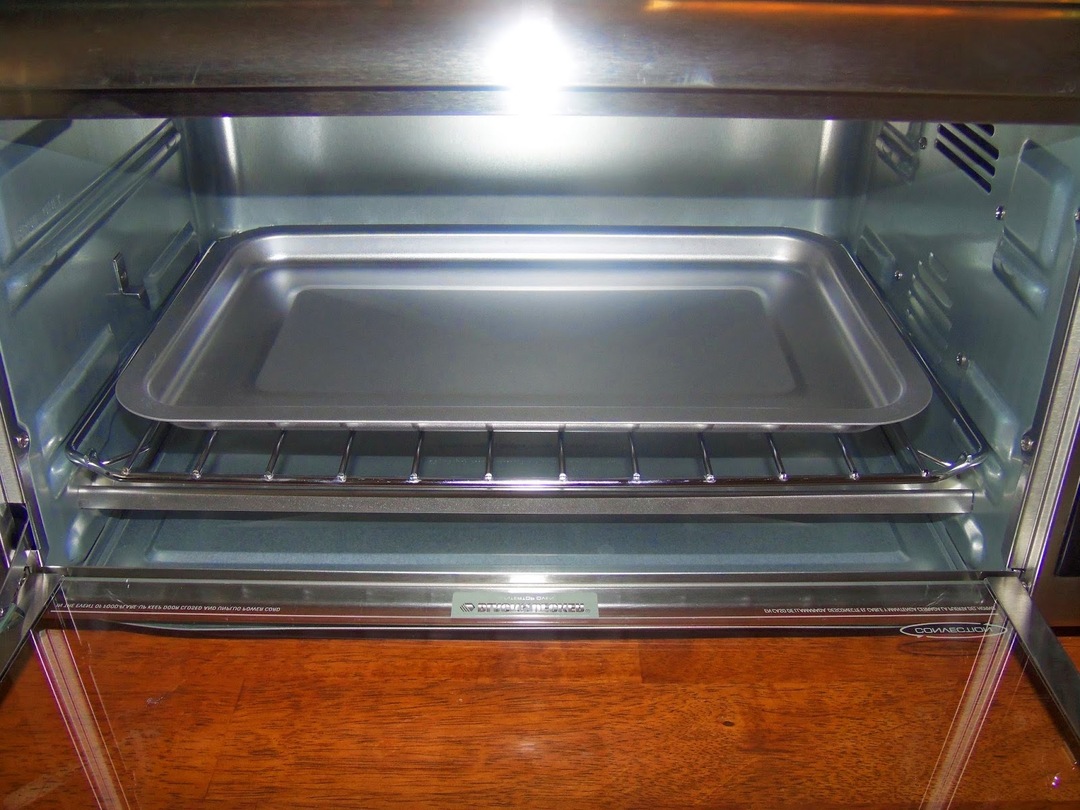
However, in some models of modern ovens it is allowed to leave trays inside the oven for the entire time of pyrolytic cleaning. This is made possible by the fact that the baking sheets are covered with heat-resistant enamel.
- Pyrolytic cleaning is inevitably accompanied by the appearance of unpleasant odors, which can be eliminated only with the help of a powerful hood, and this involves additional costs for its acquisition.
- Pyrolytic cleaning is not automatic. To activate it, you need to start manually. In addition, it is quite energy-intensive( for a full cycle of cleaning goes up to 7 kW).
- Oven models with pyrolysis function are quite expensive due to the high cost of component parts and high-tech materials from which they are made.
Pyrolysis is most often equipped with built-in household appliances, as they are primarily aimed at people with high incomes.
Learn more about the self-cleaning technologies for the oven:
Related Videos:
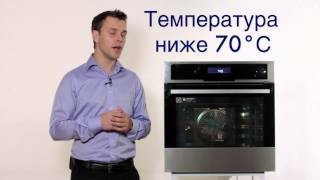 5:08
5:08 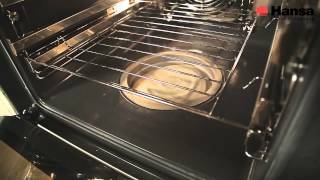 2:08
2:08  2:59
2:59 